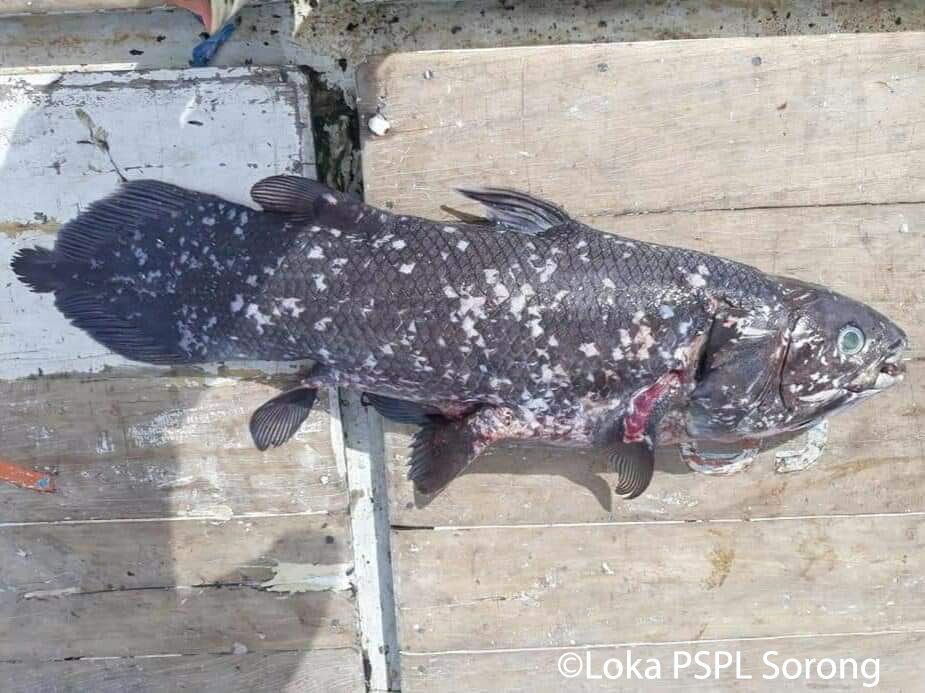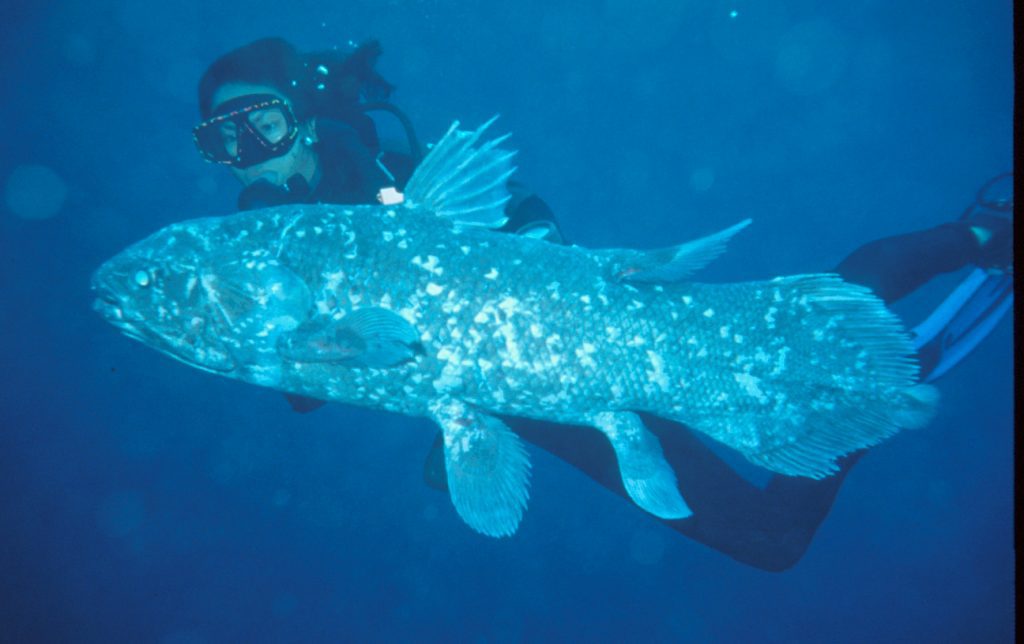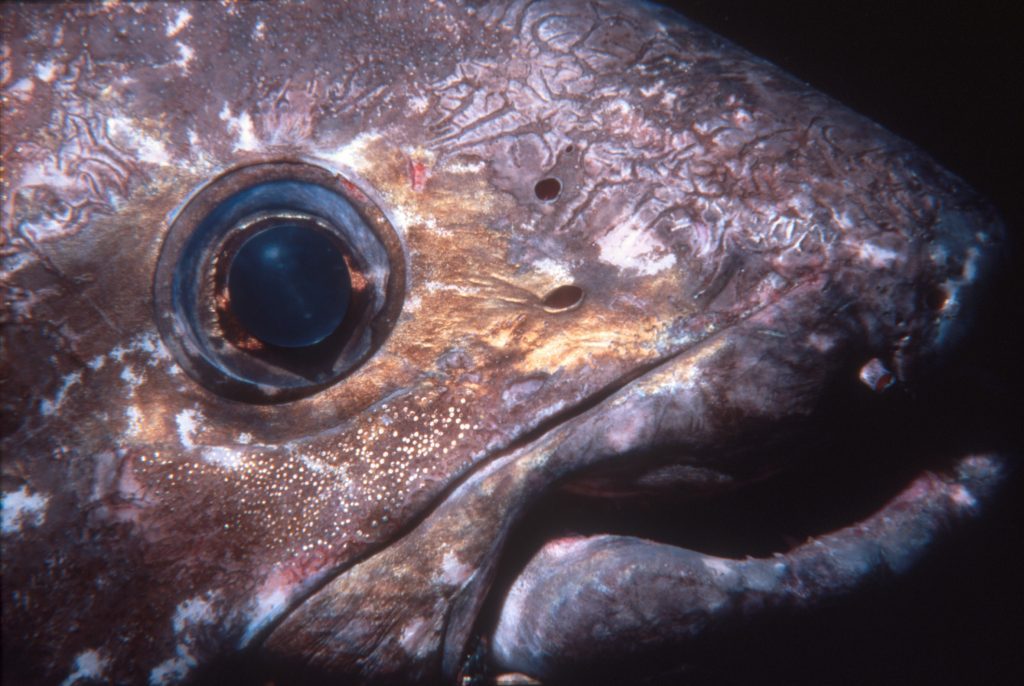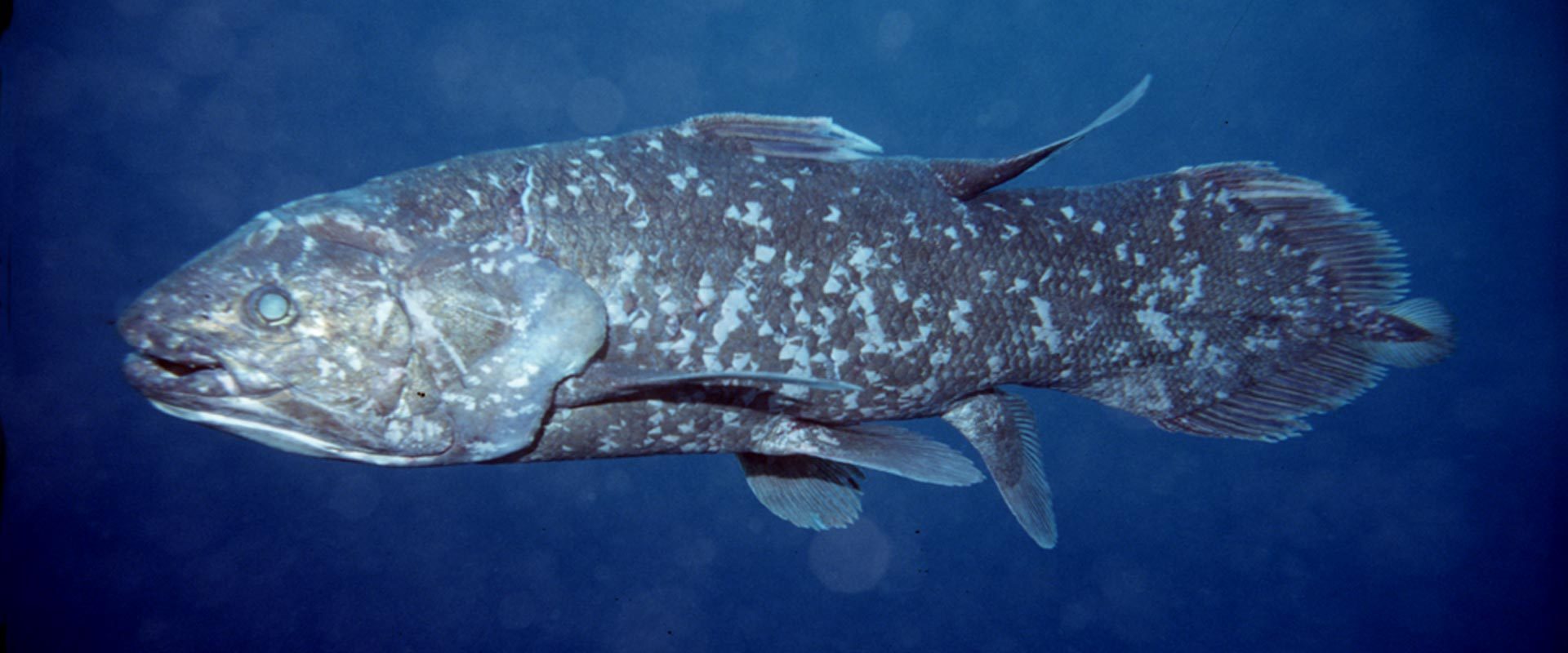Living Fossil Found in Raja Ampat: Local Fishermen Raise a Coelacanth by Susan Vulpas
Living Fossil Found in Raja Ampat: Local Fishermen Raise a Coelacanth
by Susan Vulpas

Coelacanth caught recently in Raja Ampat
The Bird’s Head Seascape, global epicenter of marine biodiversity, has upped its species count and added the coelacanth to its growing treasure trove of marine riches. On July 1, 2018 a group of recreational rod fishermen caught a one-meter long coelacanth near Urbinasopen village off southeast Waigeo in northern Raja Ampat. Reeled in from about 300 meters depth, Latimera menadoensisis one of the two known living species of coelacanths. This latest find lies nearly halfway between northern Sulawesi, 700 kilometers to the west, and Biak, 600 kilometers to the east, the only other locations where the Indonesian coelacanth has been found. While the fish was not alive when it surfaced, this find suggests a continuous habitat for Indonesian coelacanths.
Now deemed a “living fossil,” coelacanths were believed to have gone extinct in the Late Cretaceous period, approximately 65 million years ago. Fossil records date some of the 90-known speciesof coelacanth back nearly 400 million years. More closely related to lungfish, reptiles and mammals than ray-finned fishes, coelacanths are considered a transitional species between fish and tetrapods.
Coelacanths captivated the world’s attention in 1938 when curator Marjorie Courtenay-Latimer re-discovered the deep-dwelling fish in by-catch from the coast of South Africa and brought it to the East London Museum. Shortly after, Professor J.L.B. Smith described the coelacanth, naming it Latimeria chalumnae, after the finder and museum curator. Further research determined that the “true home” of L. chalumnaeis the Comoros islands off the east coast of Africa.

Arnaz Metha with Coelacanth (from 1997) ©Mark Erdmann
In 1997, Dr. Mark Erdmann, now Vice President of Conservation International’s Marine Programs, and his wife, Arnaz Mehta, stumbled on a coelacanth in the Manado market in northern Sulawesi. After an active ten-month search, their team found a second specimen for further study. Their research demonstrated that the northern Sulawesi species is distinct from that of the Comoros Islands. In addition to genetic differences, the morphology of the two also differ: while both have a similar mottled pattern, the coelacanths from Comoros are a steely blue and the Indonesian species is brown with gold flecks.

Coelacanth face ©Mark Erdmann
A joint Fukushima Aquamarine and LIPI expedition in 2011 used a remotely operated vehicle to photograph a coelacanth at a depth of 210 meters in Biak, Papua. This latest Latimeria menadoensis discovery in Raja Ampat confirms again that shallow or deep the Bird’s Head Seascape encompasses the most bountiful tropical seas on earth.
Susan Vulpas is Conservation International’s Marine Programs Coordinator, Indonesia.
…………………………………………………………………………………………………………………………………………
Websites referenced:
Biak (http://sciences4shared.blogspot.com/2011/03/coelacanth-was-found-in-biak-papua.html)
90 Species (https://vertebrates.si.edu/fishes/coelacanth/coelacanth_wider.html)
General (https://theconversation.com/hunting-for-living-fossils-in-indonesian-waters-34770)
General (http://ir.nrf.ac.za/bitstream/handle/10907/374/Nulens_special_publication3.pdf?sequence=1)





































